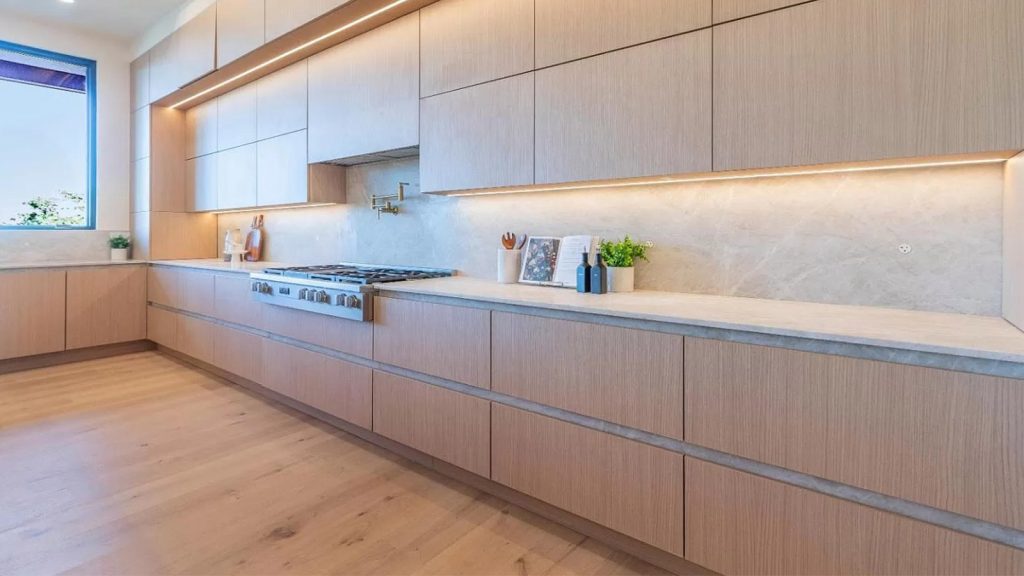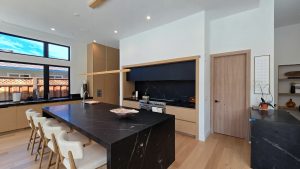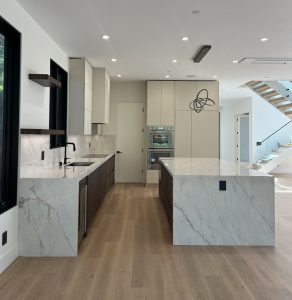Cabinetry is more than just storage—it’s a crucial element of interior design that balances functionality with aesthetics. From custom-built designs tailored to a client’s needs to high-end luxury installations, the process of constructing and installing cabinets requires precision, craftsmanship, and innovation.
This blog explores the entire cabinet-making journey, detailing the materials, tools, construction methods, and expert installation techniques that ensure a flawless result.
Step 1: Material Selection – Building a Strong Foundation
Choosing the right materials is essential in creating durable, visually appealing, and long-lasting cabinets. The most common materials include:
Laminate & Veneer – Used for modern finishes, providing sleek aesthetics while maintaining affordability.
Solid Wood – Premium choice for luxury cabinetry, providing durability and natural beauty. Popular options: oak, maple, walnut, cherry.
Plywood – Offers stability and resistance to warping, widely used in high-quality cabinet boxes.
Medium-Density Fiberboard (MDF) – Smooth and cost-effective, ideal for painted finishes.
Particleboard – A budget-friendly alternative, though less durable than plywood or solid wood.

Selecting materials based on strength, finish type, and environmental impact ensures a well-crafted foundation for any cabinetry project.
Step 2: Design & Planning – Precision from Concept to Blueprint
Before cutting and assembling, precise planning is critical. The design phase includes:
✅ Layout Planning – Optimizing storage and functionality to fit the space.
✅ Joinery Selection – Choosing construction methods (dovetail joints, dado joints, pocket screws).
✅ Hardware Selection – Selecting hinges, drawer slides, handles, and soft-close mechanisms.
✅ Customization Details – Incorporating unique elements like decorative molding, glass inserts, or embedded lighting.
A well-thought-out design ensures efficiency, structural integrity, and a seamless aesthetic.
Step 3: Cabinet Construction – Bringing the Blueprint to Life
The fabrication process involves precise cutting, assembly, and finishing to create high-quality cabinet structures.
Cutting & Shaping Components
Using CNC machines, table saws, and edge banders, craftsmen cut components with extreme precision to ensure exact dimensions.
Joinery & Assembly
Cabinetmakers utilize different joinery techniques to strengthen construction:
- Dovetail Joints – Best for drawer boxes, providing unmatched durability.
- Pocket Screws – Used in framed cabinetry for stability.
- Mortise & Tenon – Traditional method for strong corner joints.
- Rabbet & Dado Joints – Common in shelving applications for maximum support.
Once assembled, components are sanded, primed, and finished with stains, paints, or lacquers.
Step 4: Cabinet Installation – Precision Matters
Proper installation ensures cabinetry aligns seamlessly within the space and operates flawlessly.
Pre-Installation Preparation
- Wall Measurement & Leveling – Walls must be checked for alignment and plumb positioning.
- Stud Location – Cabinets should be securely anchored into wall studs for long-term stability.
- Marking Reference Lines – Establishing reference points for consistent alignment ensures smooth installation.
Installation Process
- Installing Base Cabinets First – Securing lower cabinetry before wall-mounted units ensures structural integrity.
- Aligning Wall Cabinets – Upper cabinets must be mounted precisely using screws, cleats, and ledger boards for support.
- Adjusting Doors & Drawers – Fine-tuning soft-close hinges and slides ensures perfect function.
- Final Touches & Cleaning – Sealing edges, touching up finishes, and cleaning before customer presentation.
Step 5: Enhancements – Adding Custom Features for Luxury Appeal
Luxury cabinetry elevates a space with custom integrations:
- Embedded Lighting – Installing LED strips inside cabinets enhances ambiance.
- Soft-Close Mechanisms – Premium hinges and drawer slides provide a quiet, smooth operation.
- Hidden Storage Solutions – Secret compartments or pull-out shelves maximize space efficiency.
- Waterjet-Cut Stone Tops – Integrating precision-cut stone enhances the aesthetic and functionality of vanities and kitchen cabinets.
Conclusion: Mastering the Craft of Cabinet Making
Cabinetry is a blend of art, engineering, and precision craftsmanship. From material selection to final installation, every detail contributes to a functional and elegant end product. Whether designing bespoke luxury cabinets or optimizing space in a modern kitchen, expert craftsmanship ensures lasting beauty, durability, and flawless performance.




